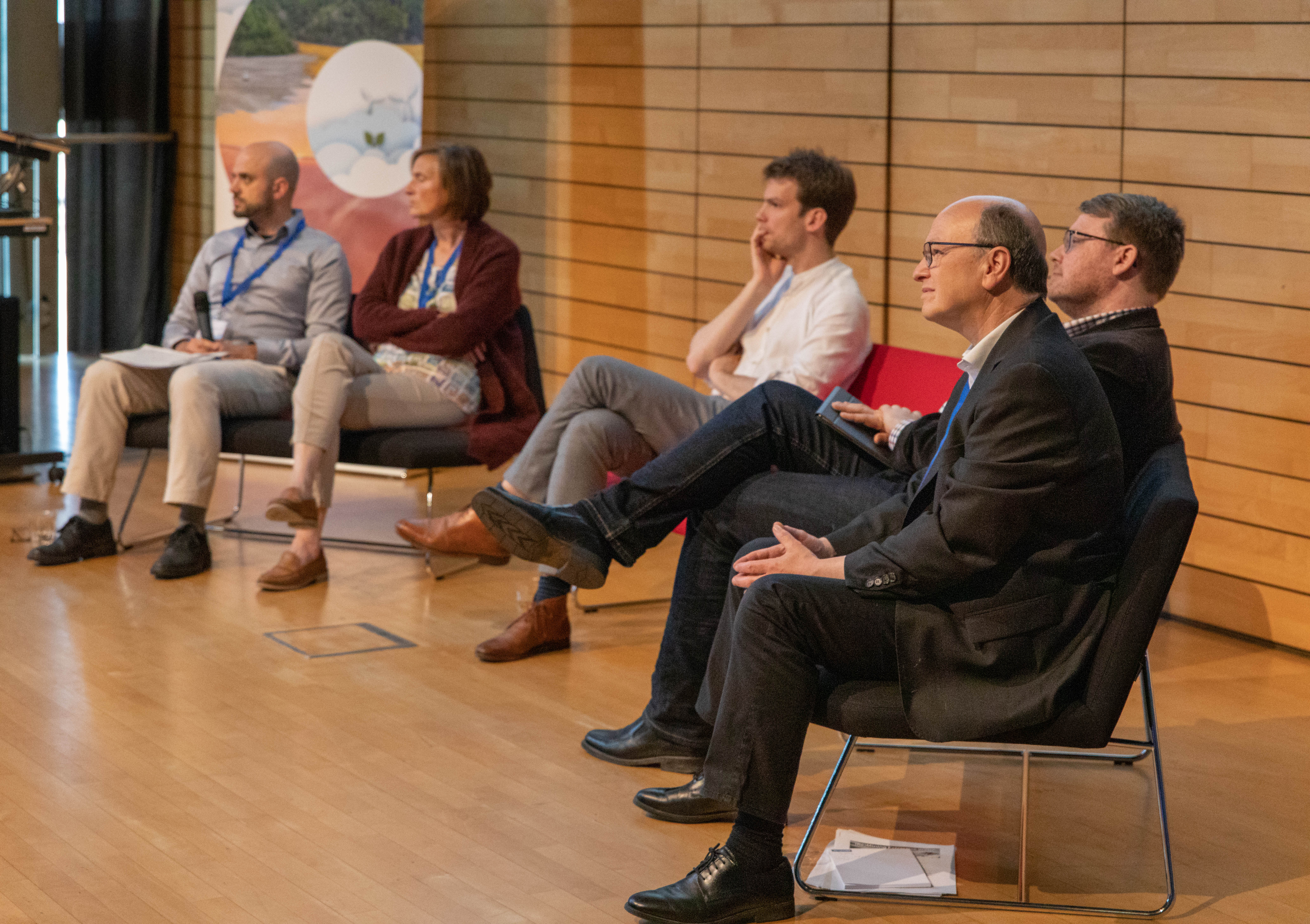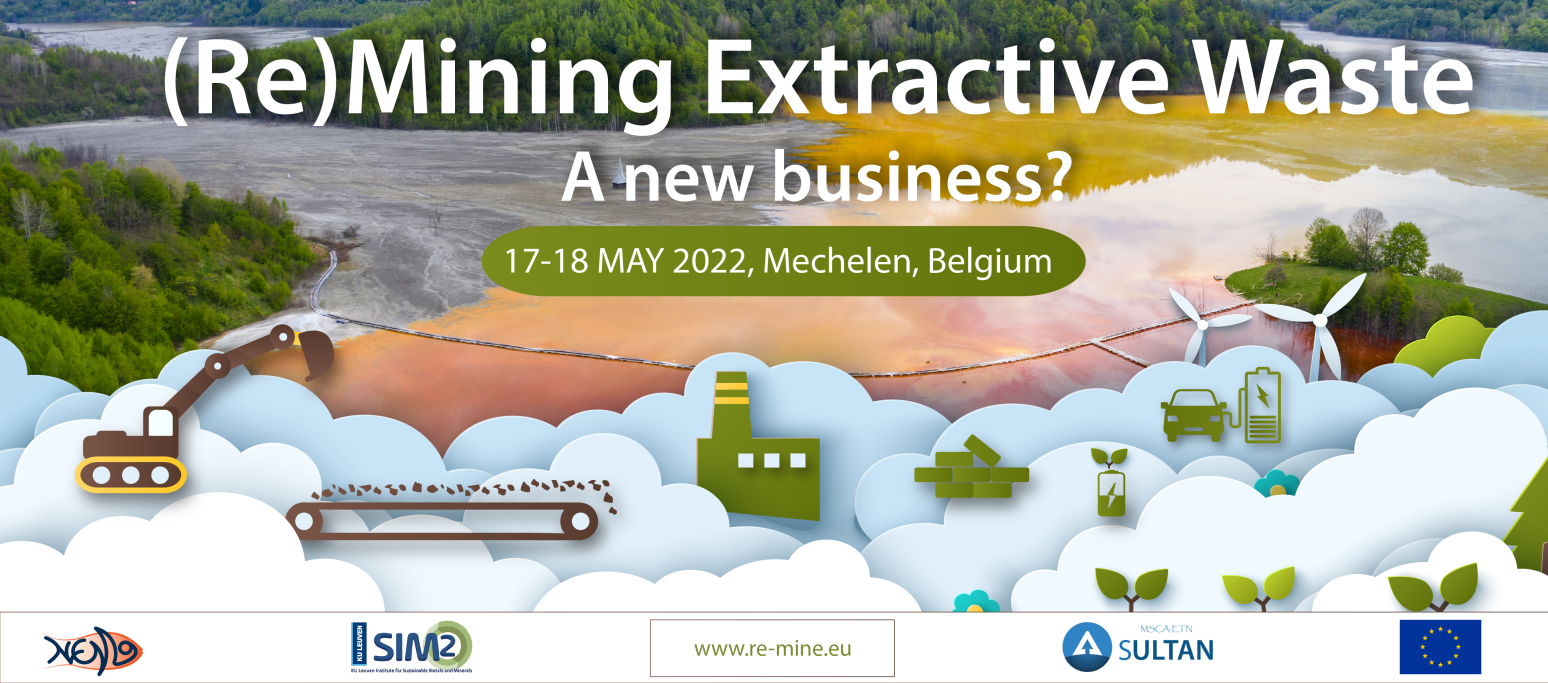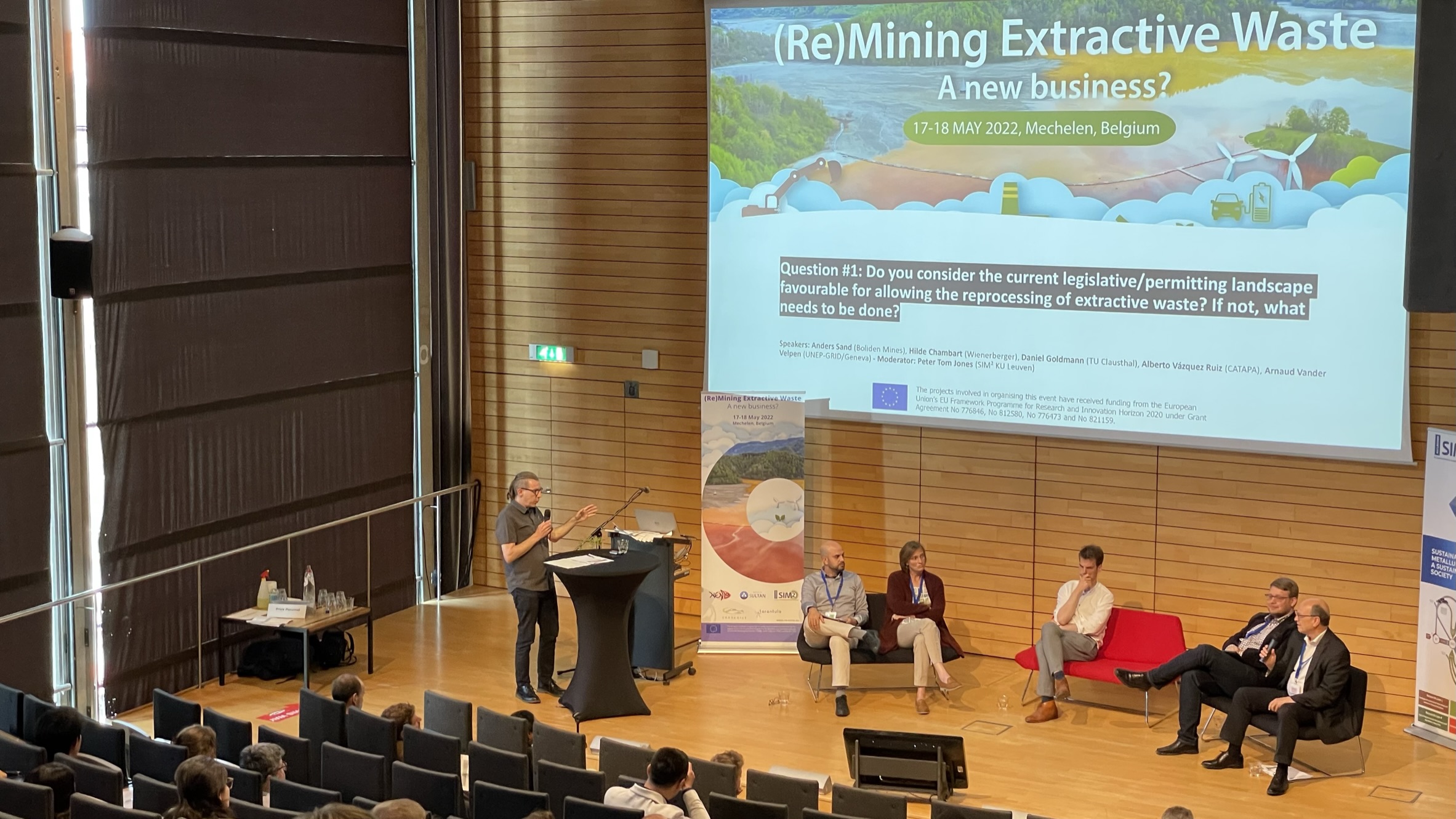On May 17-18, 2022, 175 participants discussed the technical, economic, legal and social aspects with respect to the potential reprocessing of extractive waste in Europe. In the closing debate, five experts shared their views on the future of the remining agenda. These were: Anders Sand (Boliden), Hilde Chambart (Wienerberger Belgium), Daniel Goldmann (Technische Universität Clausthal), Alberto Vázquez Ruiz (Catapa) and Arnaud Vander Velpen (UNEP/Grid-Geneva). The debate was moderated by SIM² Director Peter Tom Jones, who has drawn five key “lessons learned” from these discussions.
I. No conflict between recycling, mining & reprocessing
There is no conflict between recycling, mining and reprocessing for energy-transition metals such as copper, lithium, cobalt, nickel, manganese and rare earths. As also concluded in the recent Eurometaux/KU Leuven report “Metals for Clean Energy”, we need domestic mining and refining, improved recycling, sustainable imports from reliable countries and technological & behavioural change. Hence, reprocessing of extractive waste (700 Mt/year in Europe) can provide an extra source of metals (and minerals).
II. Harmonisation of legislative framework urgently required
Reprocessing (remining) of extractive waste from active mine sites is far more straightforward than from closed (historical) mining sites. Still, the EU & national policy frameworks need to be harmonised & re-aligned to pro-actively facilitate reprocessing, rather than merely “not prohibiting” it. Permitting procedures need to become much faster than is the case today, as we could see from the Swedish situation (cf. presentation Anders Sand, Boliden).
III. Remining industry and construction industry need to align
Given the gargantuan volumes, absorption of the residual minerals from reprocessing activities into construction materials (aggregates, cement/concrete, ceramics…) is a conditio since que non for the reprocessing industry. To make this come to fruition, the mining industry needs to work way more pro-actively with the construction industry to align the requirements. New factories for construction materials can be set up close to (more remote) mining sites. This should be part of a new Circular Economy mindset. Once more, EU and national policy frameworks need to be aligned to facilitate this endeavour.
IV. Public-private-partnerships for remining of historical sites
Reprocessing of CRM-rich tailings in active mining sites can proceed without specific subsidies, as can be seen from the many successful case-studies that were presented (e.g. Euromanganese’s Chvaletice project in the Czech Republic). However, this is not the case for historical tailing sites. Here, public-private-partnerships (PPS) – with some form of subsidy – will be needed to allow private companies to set up the reprocessing projects for these sites. This allows to reap the public benefits of reprocessing (in terms of removal of the pollution source, CO2 reduction, job creation).
V. Communication & participation are key
As regards the Social License to Operate for reprocessing projects, the conclusion is that – by and large – local communities are quite favourable towards such remediation/resource recovery activities. This is in stark contrast with the (failed) attempt in Europe to get Enhanced Landfill Mining projects up and running. In the latter, the lack of public acceptance was the final nail in the coffin of the once-emerging landfill mining community (cf. EURELCO). To further improve the SLO for remining of extractive waste, there was a clear consensus amongst all participants that communication & participation towards/of civil society are essential. Specifically for remining projects of historical sites, one can also think about setting up PPS schemes in which co-ownership by the local population is integrated in the new models.
Final conclusion
This brings me to my final conclusion. Prior to the symposium, I was somewhat fearful that the Reprocessing (of extractive waste) Community was facing an uphill battle. However, to me it is clear now that – compared to the almighty struggles of the Enhanced Landfill Mining community, in which I was very active for about 10 years – the future is much brighter for the Remining Community. I was particularly impressed with the stories about the German, Czech and Canadian case-studies. They have convinced me that remining of Extractive Waste is not a pipe dream but a very realistic opportunity for strengthening the European raw materials strategy to become less dependent on the rest of the world for our (critical) energy-transition metals.
Acknowledgements
The symposium was organised by the Horizon2020 NEMO and SULTAN projects in collaboration with SIM² KU Leuven, with the support of CROCODILE and TARANTULA projects. The NEMO, SULTAN, CROCODILE and TARANTULA projects have received funding from the European Union’s EU Framework Programme for Research and Innovation Horizon 2020 under Grant Agreement No 776846, No 812580, No 776473 and No 821159.





